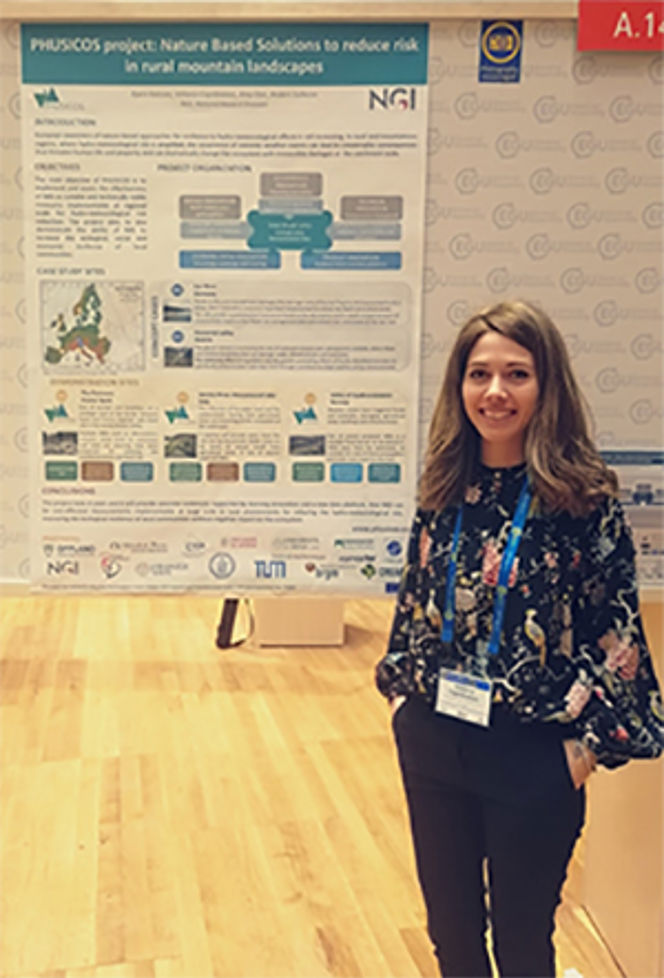PHUSICOS at EGU 2019

By Vittoria Capobianco, post-doc at NGI.
It was a great experience to take part at the EGU 2019 in Wien in mid April with a poster presentation on behalf of NGI, about the PHUSICOS project on “Nature-Based Solutions to reduce the risk in rural mountain landscapes”.
“Try the Green –It`s the new Grey”
As in the futuristic and utopian city where the cute robot Wall-e used to live, “Try Blue – It`s the new Red!” was the spot advertising that the trendy colour was not anymore the Red but the Blue.
The same nowadays is happening in the scientific community. And this is not an utopia, because Green and Blue Infrastructures are increasingly demonstrating to be really efficient and feasible solutions to reduce the hydro-meteorological risk. Many finished or ongoing projects at urban scale are providing a fully replicable demonstration actions for the application of Nature-Based Solutions to address climate change impacts and improve the quality of life and urban resilience instead of using the Grey Infrastructures, which are considered more impactful for the surrounding environment.
Nature-Based Solution (NBS) is the new concept adopted from European Community for “actions inspired by, supported by or copied from nature; both using and enhancing existing solutions to challenges, as well as exploring more novel solutions, for example, mimicking how non-human organisms and communities cope with environmental extremes” (European Commision, 2015)
EGU experience
I had the opportunity to share info and on-going work about PHUSICOS with a poster prepared by me and the co-authors from NGI Amy Oen, Bjørn Kalsnes and Anders Solheim.
At EGU 2019 I met many researchers working on similar projects and I had the chance to share ideas, receive feedbacks as well as useful comments for the goals we need to reach in the coming years with this ambitious project, in order to make “The Green to become the new Grey”.

Vittoria Capobianco, the author of this news article, at EGU 2019 in Wien. She is environmental engineer, PhD, and post-doc at NGI.